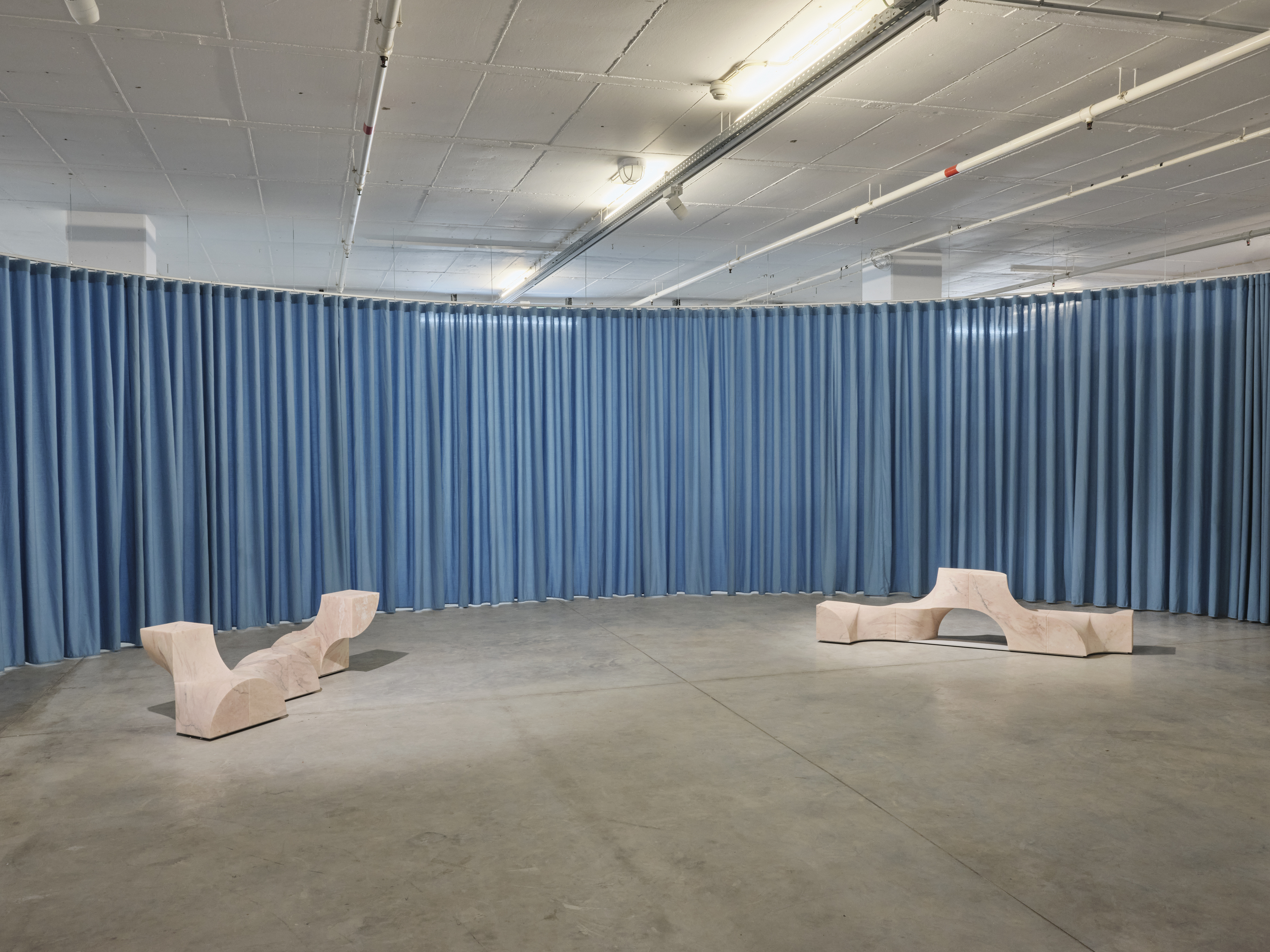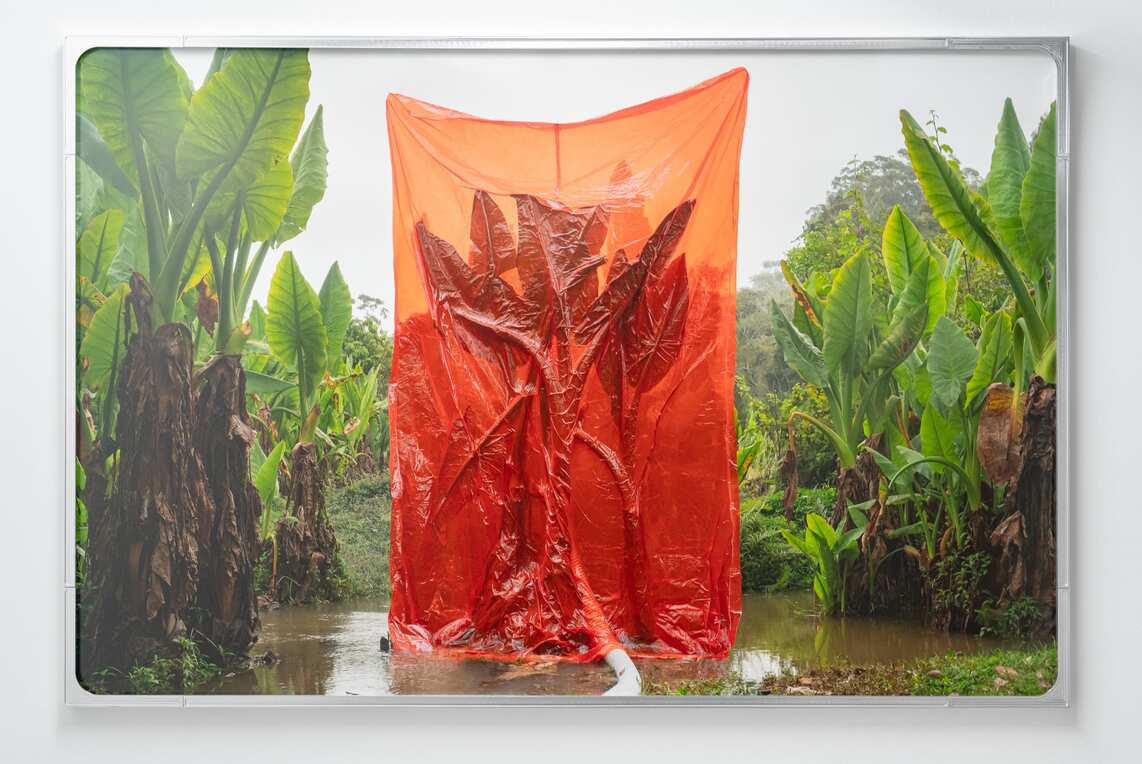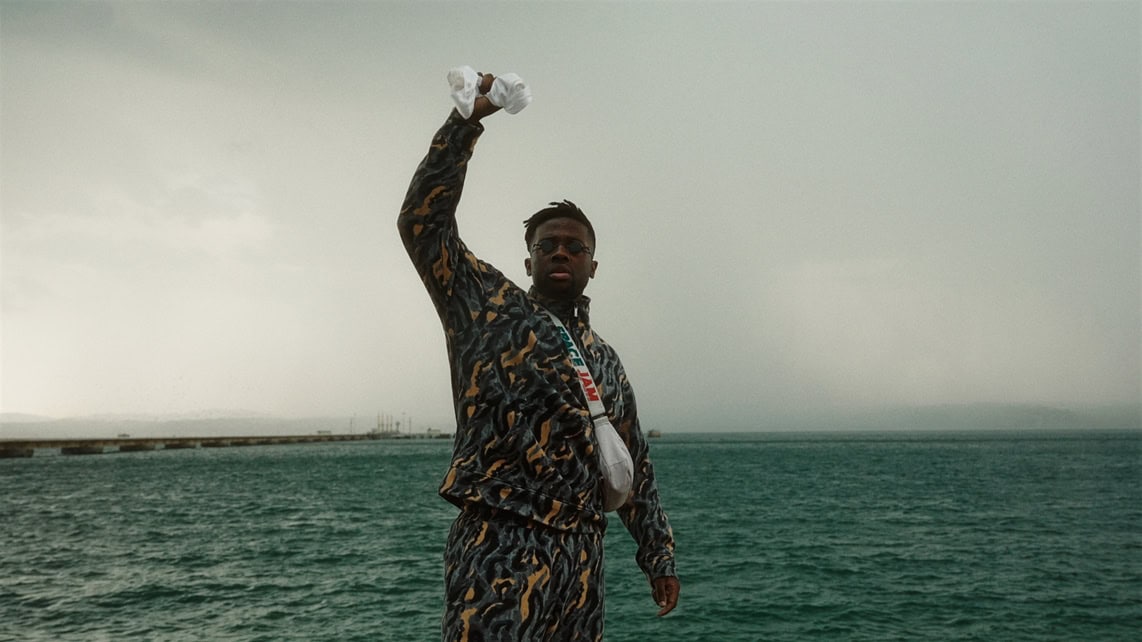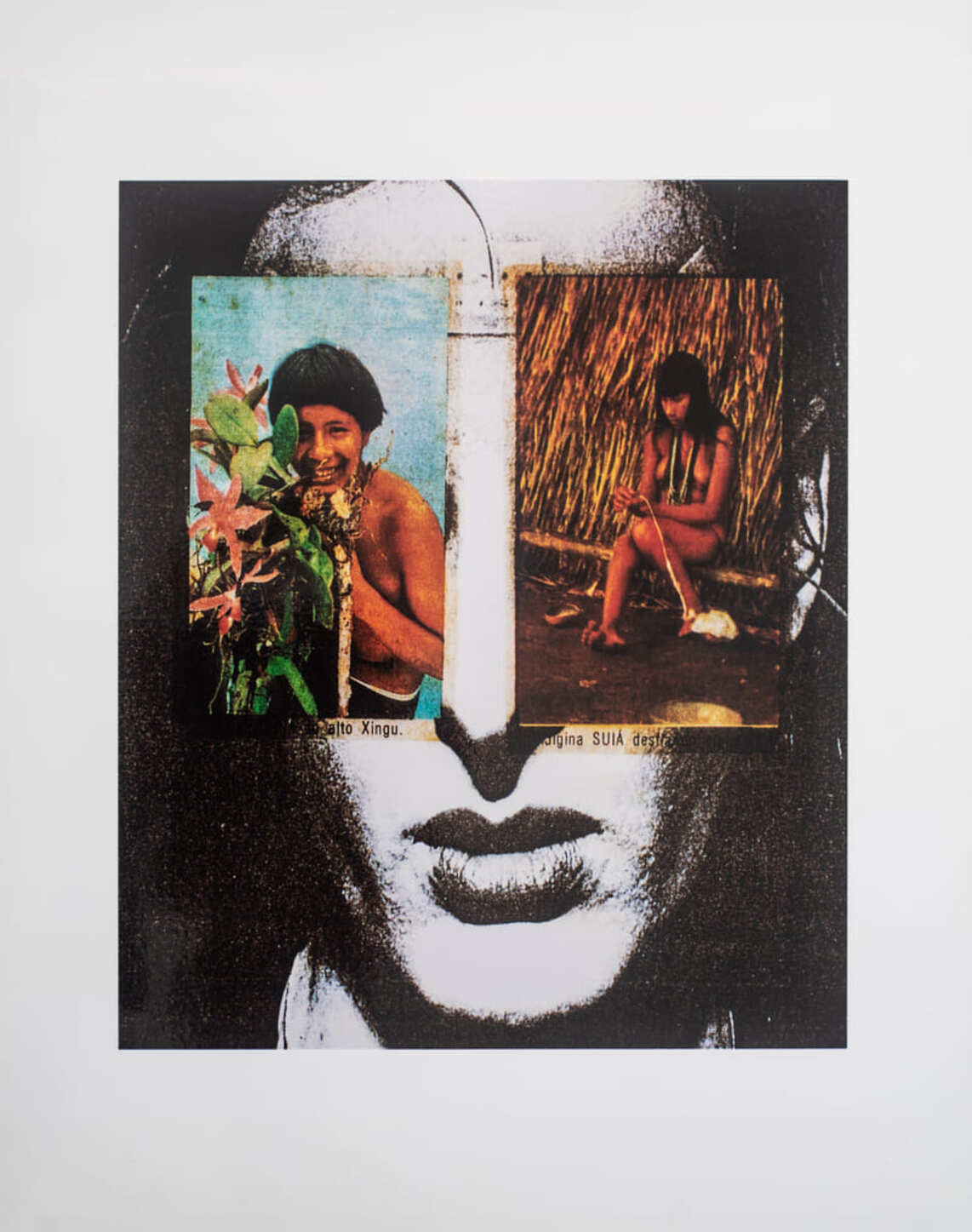In the beginning was the word. At the dawn of the scene, even before the hero, stood the chorus. Much has been written about its many‑sided role in Greek tragedy: poised between an ‘ideal spectator’, charged merely with commenting on the unfolding story, and a performer, a privileged fulcrum who also steers the drama’s course, the chorus ultimately embodies the shared breath of the polis. At once witness and collective conscience, it gives voice to the cadence of lament and resistance, stretching the ethical and affective dilemmas that resound through its thick unison. Beyond referring to a ritual gesture held in common, the etymology of chorus—perhaps linked to the root khor, implying spatial demarcation and circular movement—also gestures towards the dynamics of territory, to the contrast between an inside and an outside.
All these dimensions, from communal reverberation in song to an acute awareness of place and its mechanisms of exclusion, lie latent within the work of Julianknxx, who presents Coro em Rememória de um Voo at the Calouste Gulbenkian Foundation’s Modern Art Centre. The exhibition continues the Sierra Leonean artist’s itinerant project, which, over the course of a year, has travelled 6 500 kilometres and nine European metropolises, engaging local colonial histories as well as different musicians and choirs in each city. Julianknxx’s practice sits more comfortably within African oral traditions—a truer reference point than Greek tragedy—particularly in its attentiveness to listening and to the cumulative overlay of perspectives that are simultaneously individual, local and global. The connection grows still stronger when one considers the close affinities between voice, mourning and belonging: music as the awakening of all who have ever sung it. The uniqueness of a single timbre is, in the end, distributed across a thousand breaths; in every inhalation echo all the final exhalations that came before.
To recall, with all the inventive nuance remembrance entails, a song or the vibration of a voice is, writes Caroline Gatt, an ‘active seeking’, ‘an exploration of the past through […] the living body’. Through song, ‘the dead speak […] they are present in the guise of a riddle, a mystery, which keeps open the gate to the unknown’[1]. The vocal act therefore confronts us with what is most intimate and spectral within and beyond us, the voice being that uncannily domestic crossing of imagination, desire and personal experience, embracing what we forget or would rather forget, what tightens the body’s muscles, what imposes silence and obstructs the flow of sound.
Sung collectively, the collaboratively composed lyrics in Julianknxx’s pieces stitch together the tempo of life and death and, above all, of presence that refuses absence. The chorus’s gleaming scarlet tunics perhaps signal this vital force—both flame and summons—while also bearing the crimson of blood, traces of violence, fatal trauma. The colour spills into the display by Tristany Mundu, the multidisciplinary Portuguese artist and music producer of Angolan descent. In Cidade à volta da Cidade, Mundu’s first solo exhibition, we wander among banners that challenge […] a fractured conception […] of nationhood[2] and picture Lisbon’s invisible neighbourhoods, bringing into view and into hearing the everyday life and affective geographies of the Sintra Railway Area.
From fire we move to water, to the geographies of the Savage Islands with Diana Policarpo and to the Tagus River with Francisca Rocha Gonçalves. Side by side, like consecutive stations in an aqueous circuit, both Ciguatera and Interferências no Tejo sharpen the senses so that we may dive into darkness, feel dampness and listen to rocks and fish. In the former we are confronted by the magnitude of a single stone occupying almost the entire gallery, compelling us to walk its perimeter, scanning topographies and rugged details: a harsher point, a rougher texture, a bead of water glinting. The encounter transports us to a kind of cave and draws us ever inward, while never letting us forget that we linger outside anything resembling a white cube, revealing a kinetic interior, geological cinema in the literal sense. Upon screens seemingly quarried and polished from the stony core, we discover narratives that speculate on sciences and fictions, island ways of inhabiting the world, care and inter‑species contamination.
An inside is likewise unveiled in Francisca’s installation, a sensorial immersion that asks us to abandon upright posture, awaken our ears and half‑drown imagination. Reclining with eyes shut, we meet the uncanny depths of the Tagus, with all its passages and disturbances: we hear and sense ‘the waves, the sliding pebbles, the shift of sand, the clicks of shrimp and the vocalisations of fish. We are likewise exposed to the interactions of breeding males calling from their nests, such as the toadfish, and to choral behaviour in species such as the meagre and the invasive croaker […]’. Ships and other agents of pollution, acoustic and otherwise, are not excluded from the arrangement. What, then, does the chorus of the contemporary Western tragedy sing?
At CAM, in chronological order of closing, Cidade à volta da Cidade is on view until May 5; Interferências no Tejo until May 19; Coro em Rememória de um Voo until June 2; and Ciguatera until July 28.
[1] Gatt, Caroline. A Living Archaeology through Song: Exploring the past through breathing and voicing (rascunho). Available in: <https://www.academia.edu/35783524/DRAFT_A_Living_archaeology_through_Song_Exploring_the_past_through_breathing_and_voicing>.
[2] Second essay available in <https://gulbenkian.pt/cam/agenda/bandeiras-sao-predios-ke-a-gente-veste-aqui-de-tristany-mundu/>.




